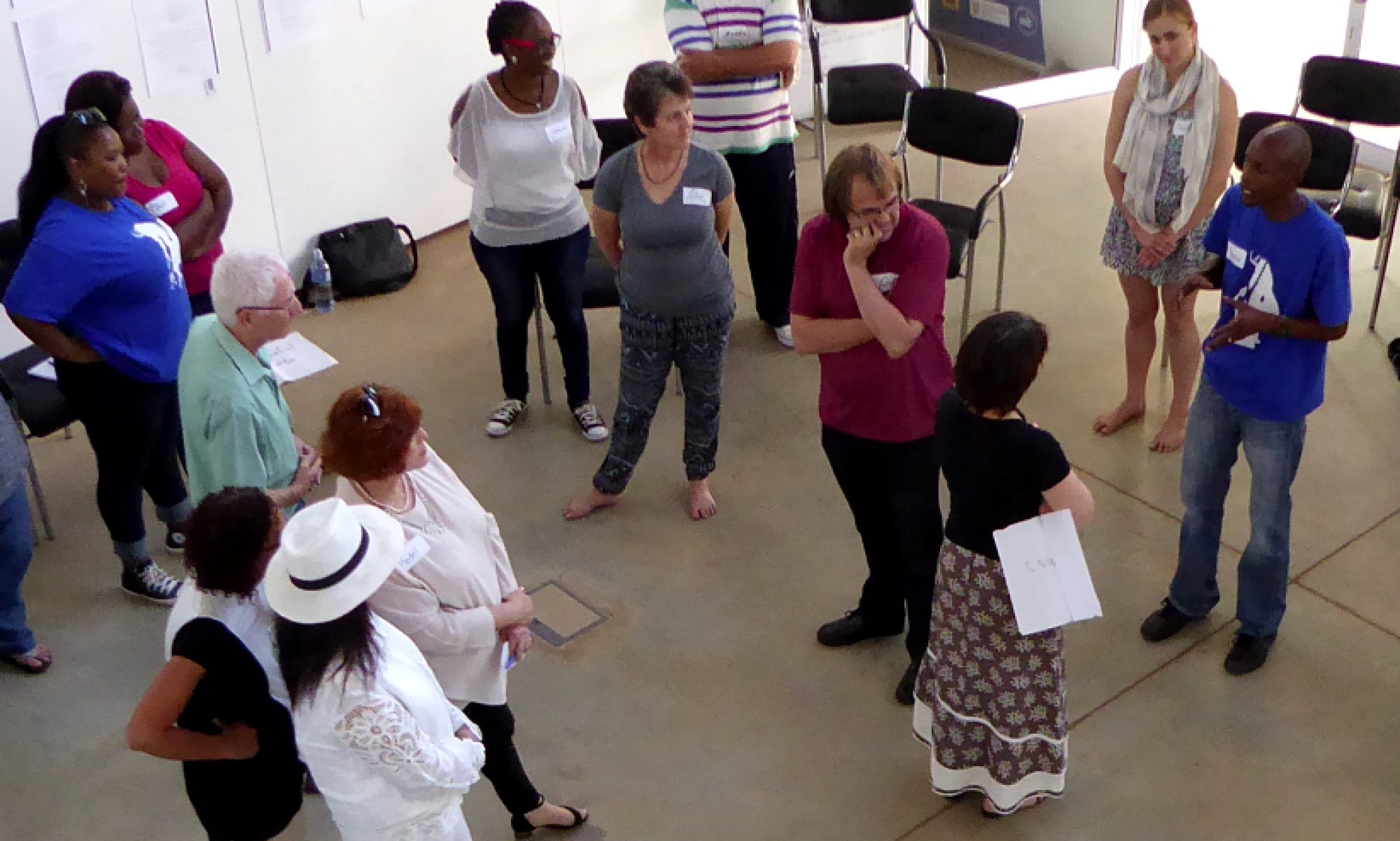
But
internal doubts plagued them. The task was a mammoth one and few felt they could make a difference by themselves. Where would they find the time and money? They weren’t trained for this kind of thing? How will they ever be able to keep it up and sustain such an output?
Because of this the Stb municipality, TUG and the Asset Builders Network joined together to run the Keep them Safe project. Its aim: to equip community leaders for the task of running their own holiday programme for kids during the Fifa World Cup.
And so the backbone team, workshop leaders and pitch teams embark on the enormous task of organising 12 holiday programmes in 12 communities across Stellenbosch. 200 adults 10 000 kids and young people. Their first task: to test their abilities by organising one Compassion Day Programme before the actual programme kicks off.
Peter Block author of Community – the Art of Belonging, teaches the importance of allowing people to raise and share their doubts and reservations. Unless room is given for people to identify and share their concerns and fears, they are unable to move beyond getting excited about something and taking action to make that thing happen.
Doubts and reservations should always be allowed into the space and accepted for what they are. Sales people will also know that if you can accept and work with the potential buyer’s reservations and objections, you are more likely to make a sale.
This marks the first of three elements that make up Stage 2 of the story:
Preparing for the Journey
- Refusal of the call: When the internal doubts and reservations are too strong and the protagonist does not feel like he/she has what it takes.
- Meeting the Mentor: The introduction of a guide that sees the potential in the protagonist and is willing to offer training and mentorship that would enable them to meet the challenge.
- Crossing the Threshold: Protagonist must perform a clear action that proves his/her commitment to the adventure.
As the protagonist sorts out his fears, objections and doubts, he becomes more and more ready to make a commitment or not. While many questions were answered during one on one conversations, we also formalised this stage at our Taster launch. We divided the group according to their area of interest: Performing Arts, Arts and Crafts, Entrepenurship, Sports, Education and Community Wellness.
Next we facilitated in each of those groups a conversation around doubts and reservations as well as the solutions the group could come up with together to address those problems.
We knew that if the questions are not heard and answers do not satisfy, the commitment is not there. In the same breath, if those doubts remain after your utmost attempts to overcome them, you do not want the person’s commitment anymore, because their heart is somewhere else. Let me explain.
For Keep them Safe we had two main objections: Where will the resources come from? How are you going to ensure sustainability?
Our answer to both was the same: How can you help us with this problem? Those who could not volunteer their time, see where they could find resources or did not see themselves commit to the dream long-term, were not the right people for the job.
In fact, our entire strategy focussed on balancing the dream with the cost.
IF the potential partner buys the dream, they will pay the price. This was also our sustainability plan: If a community could find the resources (time, money, skills, equipment etc) within themselves they will be independent from outside funding and resources and therefore will be able to find it time and time again for every holiday programme to come. Their independence makes it sustainable.
Now make no mistake, many said ‘we are from a poor community, we have nothing to offer’ and we would say: we will help you find what you need’. We offered training in project management, leadership and fundraising. We also offered training and support for workshops and programmes. We provided guides and mentors for every lack.
By the time Keep Them Safe was over, every community would have a trained team that would co-ordinate and run their own holiday programme with resources from their own community. We called them PITCH teams.
At our Taster launch we therefore included an entire programme of introductions where partners and organisations presented their offerings of training and support. It was a dialogue between the fears of the teams and the offerings of the guides.
Finally, we needed all teams to prove their commitment and so we issued their first challenge: within the next two months they would have to run a Compassion Day programme once in their communities. They had to identify a need within their community and organise the kids and youth to address that need with resources from within their own community – or resources that they found themselves outside the community. Again we would provide training and guidelines.
To summarise, the second stage of every story is the preparation for the journey. IF you are planning a programme or project here are the questions you need to answer:
- How will you air and validate your target audience’s doubts and reservations? How can you clarify the cost of the commitment?
- Who are the Mentors and what training can they offer? How will theymaximise the strengths of the target audience?
- What clear action do protagonists have to take to prove their commitment?

